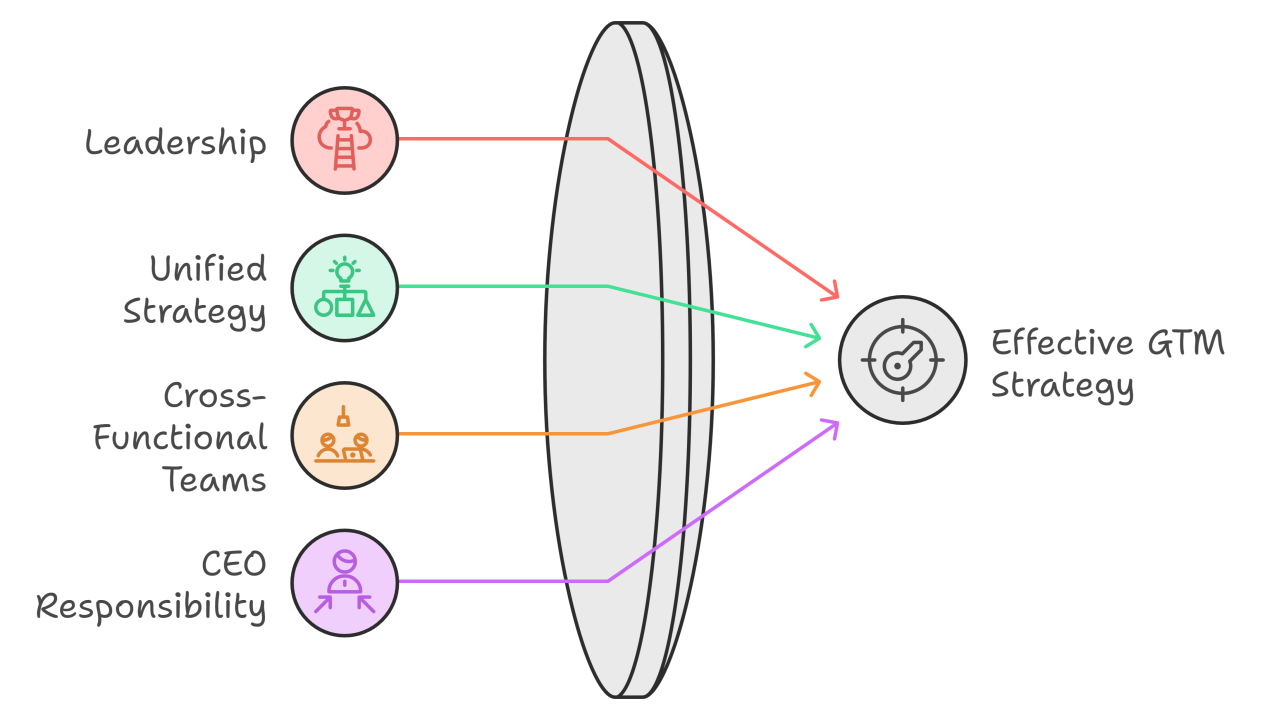
Why Marketing Alone Won’t Fix Your GTM Problems
If your go-to-market (GTM) strategy isn’t delivering results, your first instinct might be to look at marketing. Maybe you’re thinking, “If we just run better campaigns or invest more in marketing tools, we’ll turn things around.” But let’s take a step back and look at the bigger picture.
The Data Doesn’t Lie
Consider this pattern:
This isn’t a jab at marketing—it’s a reality check. Marketing alone can’t solve your GTM issues. Even the most brilliant ads, seamless funnels, and high-performing marketing teams will struggle if the underlying GTM strategy is broken. And here’s the key: Fixing your GTM strategy isn’t marketing’s job.
The Role of Marketing (and Why It’s Not Enough)
Marketing’s job is to create awareness—to amplify your brand and ensure your audience knows you exist. It’s not about single-handedly driving sales or closing deals. That’s the job of your sales team.
The problem arises when businesses expect marketing to carry the entire GTM strategy. This assumption leads to misaligned goals, wasted budgets, and unmet expectations. Worse, it creates friction between marketing and sales teams, with each blaming the other for missed targets.
But here’s the thing: Marketing and sales are two sides of the same coin. For them to work in harmony, they need strong alignment. And that alignment must come from the very top.
Who Should Own GTM?
The answer is simple but often overlooked: The CEO.
Why? Because the CEO has the broadest view of the organization. They understand how sales and marketing fit together and can make the strategic decisions needed to create alignment. Here’s how CEOs can take ownership of GTM success:
Think Hiring Someone Else Will Fix It? Think Again.
If you think hiring a new person to focus on improving the process will solve your GTM challenges, think again. That new hire, no matter how experienced, will never have the clarity of someone who understands the organization holistically—you, the CEO.
Even the most skilled operator will struggle to align departments and fix deep-rooted issues without your active involvement. Your leadership and input are crucial unless you’re planning for this person to become a long-term leader of the business. In that case, they need time, authority, and alignment with your vision.
But for now? You can’t just delegate GTM and walk away. You need to stay in the equation and guide the transformation.
The Risks of Not Owning GTM
When CEOs delegate GTM ownership to sales or marketing leaders, problems inevitably arise. Marketing becomes overly focused on awareness without considering how leads flow through the funnel. Sales, meanwhile, chases deals without a clear understanding of how to maintain a strong pipeline.
The result? Blame-shifting, missed quotas, and lost opportunities. Without a CEO’s oversight, GTM strategies fail because no single leader has the perspective or authority to align the moving parts.
A Call to Action for CEOs
If you’re a CEO, ask yourself:
Marketing and sales are critical, but they can’t succeed in isolation. It’s up to you to step in, take ownership, and ensure everyone is rowing in the same direction.
The Bottom Line: Your GTM problems won’t be solved by a shiny new ad campaign or a CRM upgrade. They’ll be solved by leadership—by creating a unified strategy that aligns your teams and drives results.
The best GTM strategies don’t hinge on any one department. They thrive under strong, cross-functional leadership. CEOs, the responsibility lies with you. Ready to lead the charge?
I help experts & founders get paid to speak
2 天前Love this perspective. So many companies underestimate the role of the CEO in GTM, but as you’ve pointed out, only they have the bird’s-eye view to drive real alignment.